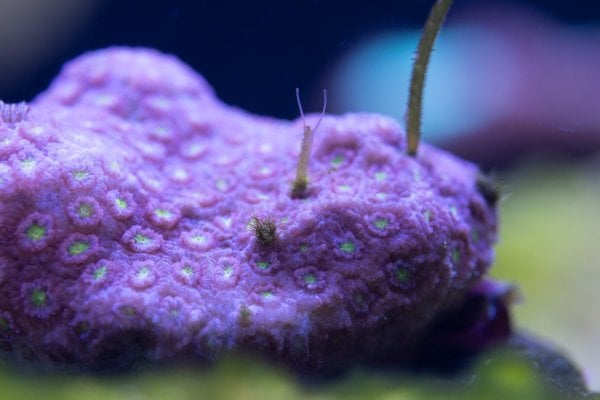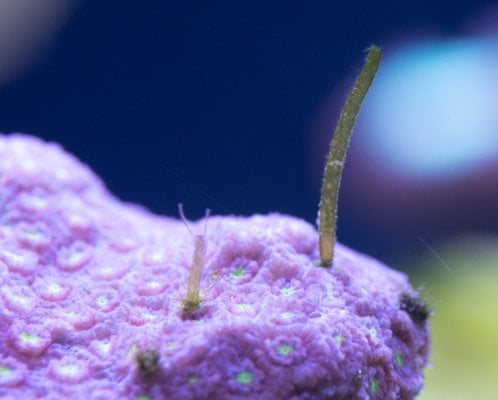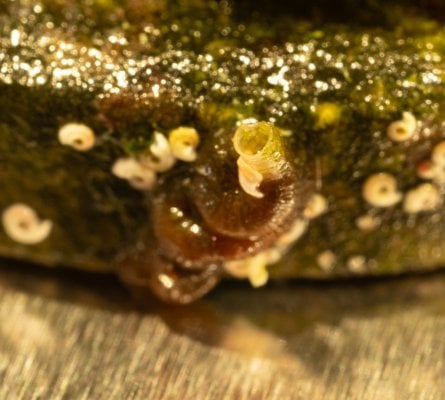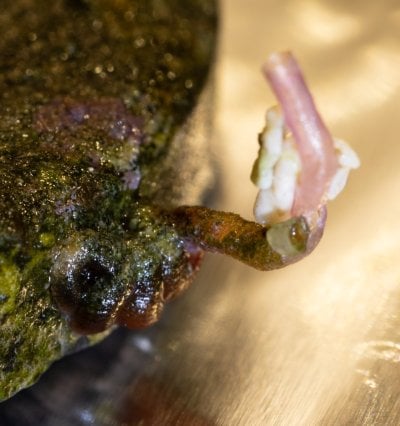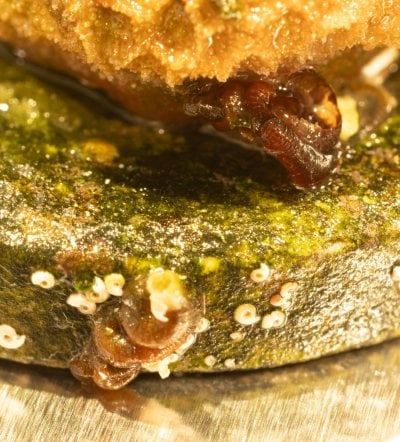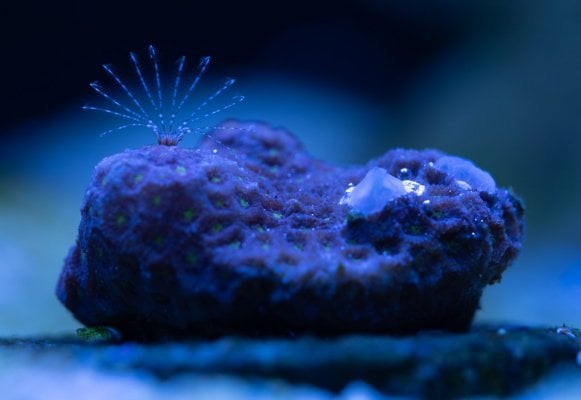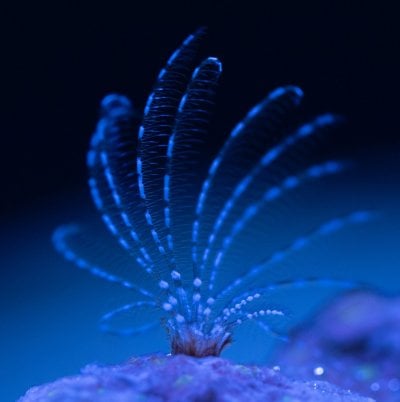Navigation
Install the app
How to install the app on iOS
Follow along with the video below to see how to install our site as a web app on your home screen.
Note: This feature may not be available in some browsers.
More options
You are using an out of date browser. It may not display this or other websites correctly.
You should upgrade or use an alternative browser.
You should upgrade or use an alternative browser.
What is growing out of my coral
- Thread starter BrettE
- Start date
- Tagged users None
Coral boring spionid worm.
The one in the middle at least seems like it may be a Coral-boring Spionid Worm; the others I can't tell for sure beyond recognizing the algae growing there.
Yeah, you'll want to nip any potential infestation of them in the bud - so you'll want to get rid of them before they spread.Do I need to worry about any of those? Do I need to kill them with fire?
I can't say for sure, as the tall one looks similar to the smaller one with the worm's palps (the two tentacles on the worm's head) sticking out, but it's really tall for a regular spionid tube.Are both of those the coral boring spionid worms, or just the thing with the one with two smaller things sticking out at the top?
If they're just on the one side of the frag, you may be able to just frag them off.You know what, this coral is tiny, and was free. Perhaps the easiest thing to do is just get rid of it. It's not really even that cool looking.
Yeah, those are vermetid snails, and most people would recommend removing them. You can scrape them off, crush the bottom of the tube with pliers, etc. to get rid of them.
That's actually a barnacle - but no, neither barnacles nor feather dusters are problematic; they're both harmless filter feeders.Is the feather duster a problem?
Great!That's actually a barnacle - but no, neither barnacles nor feather dusters are problematic; they're both harmless filter feeders.
How do you know? What features give it away?
Are there any good reference texts or anything that can help with critter identification?
Feather dusters fan out into a circle rather than a semi-circle/rake-shape like you'll see with barnacles. Feather dusters also have tubes while barnacles have sort of globe/mound-shaped shells they live in. Also, barnacles will make a very distinctive feeding motion where they'll curl their cirri (the feeding appendages you see in your pics) into their holes like a hand curling into a fist.Great!
How do you know? What features give it away?
Are there any good reference texts or anything that can help with critter identification?
For reference texts:
For other ID's, I tend to be pretty intense about figuring things out, so I'll go combing through a number of different databases to find something that matches or points me in the right direction if I'm not sure on the ID to start. The thread below lists most (I'm sure I've forgotten one or two) of the databases I use and has some info on them/using them:
That said, some ID's are easy, others are very difficult, and there's a lot of in between; for a lot of the easy ones, I'd recommend the threads below, but for the others time/experience, learning about marine life generally, extreme attention to detail, and occasionally a taxonomic key are what you need. (I've found that when first learning to try and ID various organisms, I would start looking at some type of organism - like starfish for example - and I'd see one that I thought looked like a match, but with more experience now in trying to ID starfish, I sometimes look back at my early efforts and facepalm a bit, because I can now readily tell that some of what I thought were matches were definitely not; all this to say that sometimes we start a bit "faceblind" (for lack of a better term at the moment) to different organisms - so they can all pretty much look the same even when they're obviously different - and experience attempting to ID/differentiate them helps with overcoming that).
Looking for a list of Marine fish
Does anyone know a good website or place that has a really nice selection of fish or just information about fish. I seem to constantly find new fish and never know the names. LiveAquaria has a okay selection but they are still missing some fish. Just looking for info with pictures and names...www.reef2reef.com
The threads:

What is that!! A R2R guide to common new tank hitchhikers.
One of the greatest things about starting a reef tank is getting your live rock in and admiring all the diversity within it. The rock comes to life different creatures. This is a guide that I, along with a very well known critter identifier @KJ , have put together for the new reefer on what...www.reef2reef.com

Guide to Common Hitchhikers in reef tanks.
The purpose of this thread is to hopefully assist hobbyists in obtaining the correct id and method of treatment to common hitchhikers. Both; the good ones and the bad ones. 1) Anemones: Some times called the flowers of the sea, many hobbyists keep them intentionally for their striking colors...www.reef2reef.com
vetteguy53081
Well known Member and monster tank lover
View Badges
Partner Member 2024
Excellence Award
Reef Tank 365
RGB
Article Contributor
Tampa Bay Reef Keepers
West Palm Beach Reefer
Hospitality Award
Ocala Reef Club Member
305 Reef Club
Wisco Reefers
Midwest Reefer
Fish Medic
MAC of SW Florida
Rock Pool Reef Keepers
R2R Secret Santa 2023
My Tank Thread
My Aquarium Showcase
Yeah, Spirorbids are harmless.Spiriopids are ok too right? I hope so because I’m starting to see them everywhere.
Similar threads
- Replies
- 1
- Views
- 56
- Replies
- 18
- Views
- 387
- Replies
- 3
- Views
- 92
- Replies
- 49
- Views
- 1,570



